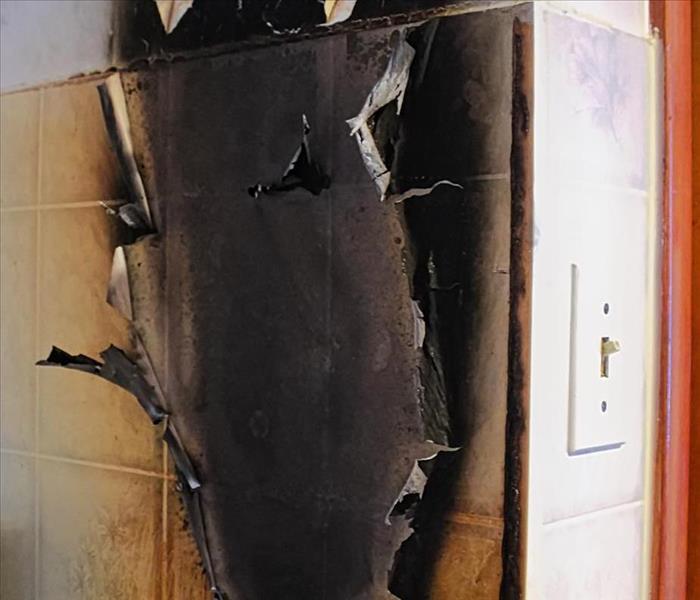Can Soot Be Removed from Surfaces after Fire Damage?
9/29/2020 (Permalink)
SERVPRO Provides Fast Fire Mitigation to Remove Smoke Residue from Lockport Homes
Soot is a smoke residue that has settled and is a troublesome material that SERVPRO technicians deal with daily. There are different types of soot, and each one can require different cleaning techniques. If you are dealing with fire damage in Lockport, you want professionals who understand what needs to be done for proper mitigation.
How is Soot Removed from Surfaces?
When determining the methods for removing soot, the combusted materials, and the makeup of the surface need to be taken into consideration. Kitchen fires are the main reason for residential fires and often involve grease fires. This leaves protein residues on the surfaces. Wood burning and oil furnace puff backs produce a different type of smoke residue. Our technicians pre-test surfaces and use the best approach depending on the material getting treated. Our professional equipment and advanced technology allow us to provide quality fire restoration in Lockport and return your home to preloss condition. The processes used can include:
- Dry Ice Blasting– Uses C02 pellets that sublimate (from solid bullet to gas) after contact. This method can be a robust or gentle abrasive cleaning process that can be used on things such as exposed beams.
- Soda Blasting– Baking soda combines with pressurized air to remove lightly charred residue on surfaces. Like dry ice blasting, it cleans the surface without damaging the substrate while offering a degree of deodorization.
- Chemical Cleaning Agents – Oil-based solvents get used on oil-based films. There are multiple chemical solvents our technicians can use.
- Agitative Cleaning Methods– Vacuuming is often the first step in removing dry smoke residues. Feather dusting, scraping, and brushing agitate the soils allowing them to get vacuumed up.
- Controlled Demolition – There are situations where the material, such as drywall, is badly affected, and restoration is not possible. When this happens, the removal of the impacted area is the process of choice. Replacement takes place during the restoration stage.
Our technicians also use various methods, such as air scrubbers, to remove soot from the air. We are a comprehensive fire restoration company that leaves your home, “Like it never even happened.”
Contact SERVPRO of East Niagara County at (716) 694 - 7776 for expert fire restoration service.






 24/7 Emergency Service
24/7 Emergency Service
